- About us»
- Net income calculator»
- Population aging»
-
- Least developed regions»
-
- Average wage
- Material need benefits
- Meal allowance
- Counties of Slovakia
- Inflation
- Living and Subsistence Minimum
- Unemployment of Czechia and Slovakia
- NACE Classification
-
- Life expectancy
- Gender differences
- Youth unemployment and NEET
- Minimum wage in EU
- Unemployment rates of different age groups
- Share of salaries on GDP
- NEET
- Long term unemployment
- Unemployment rate
- Percentage of employees ususally working at nights
- Employment rate
-
- Bratislava and surroundings
- Kopanice
- Danube river
- lower Vah river
- middle Vár river
- upper Nitra river
- lower Nitra river
- Mining cities
- Kysuce a Orava
- upper Vah river - Liptov
- Spiš cities
- upper Hron river
- Juhoslovenská kotlina
- Košice fold and Torysa river
- upper Zemplín
- lower Zemplín
- EU regions
- NUTS3 regions of Slovakia
- LAU1 dataset
-
- Projects and activities
- Inclusive growth»
- Good work
- Project SKRS
- Social system – reality and vision
-
- Education of unemployed
- Young unemployed not taking part in education
- Proposal to change the system of education funding
- Library
- News»
- Contact
Iceland – IS00
EU regions: Iceland > Iceland > Iceland
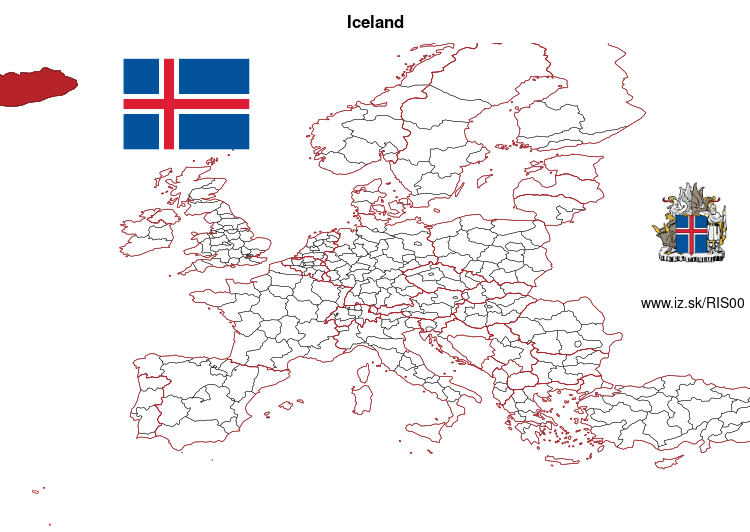
| Indicator | Period | Value |
|---|---|---|
| Life long learning | ||
| life long learning participation | 2024 | 27.1 |
| Part time jobs and flexible employment | ||
| percentage of part time workers | 2024 | 16.79 |
| percentage of part time workers, men | 2024 | 8.2 |
| percentage of part time workers, women | 2024 | 27.42 |
| Gender differences | ||
| gender gap in employment rate | 2024 | 93.42 |
| gender gap in unemployment rate | 2024 | 86.84 |
| Graduates and young people | ||
| unemployment rate of youth with elementary education | 2024 | 11.6 |
| NEET | 2024 | 4 |
| Employment | ||
| employment rate | 2024 | 85.4 |
More on wikipedia wikidata Q189 on OpenStreetMap Iceland slovensky: IS00
Subregions: Capital Region, Landsbyggð
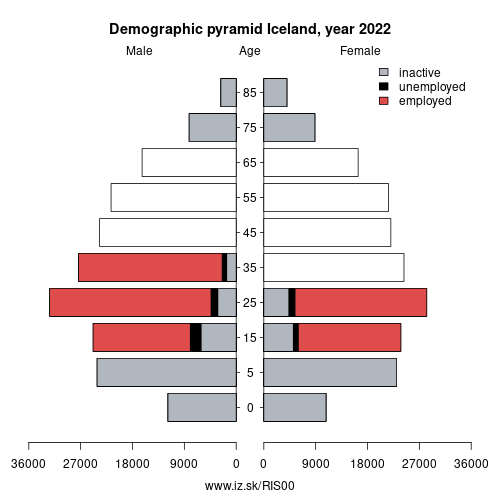
Unemployment
| Indicator | Period | Value |
|---|---|---|
| Unemployment | ||
| unemployment rate | 2024 | 3.7 |
| youth unemployment rate | 2024 | 9.1 |
| Long term unemployment | ||
| long term unemployment | 2024 | 0.4 |
| share of long term unemployed | 2024 | 12.1 |
Demographics
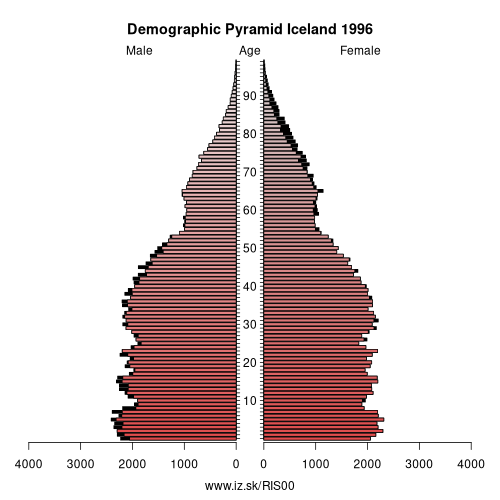
| Indicator | Period | Value |
|---|---|---|
| Demographics | ||
| number of inhabitants | 2024 | 383 567 |
| population density | 2023 | 3.8 |
| old-age dependency ratio | 2024 | 23.6 |
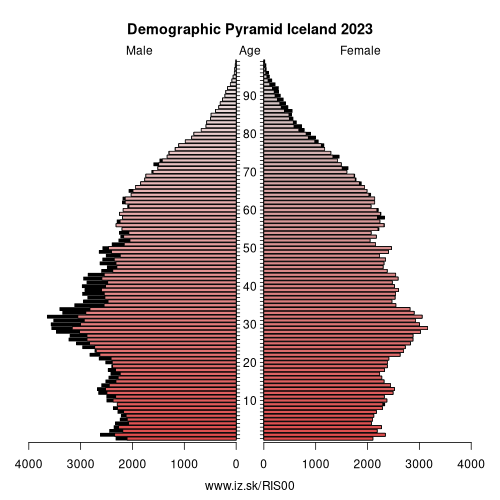
Employment by sectors, Iceland
| NACE r2 | % | NACE r2 | % | ||
|---|---|---|---|---|---|
| A | 8.4 | 4% | B-E | 24.4 | 11% |
| F | 17.6 | 8% | G-I | 53.2 | 23% |
| J | 10.8 | 5% | K | 6.1 | 3% |
| L | 1.7 | 1% | M_N | 21.7 | 9% |
| NRP | 2.3 | 1% | O-Q | 69.1 | 30% |
| R-U | 14.3 | 6% | TOTAL | 229.5 | 100% |
Data for the period year 2024. Source of the data is Eurostat, table [lfst_r_lfe2en2].
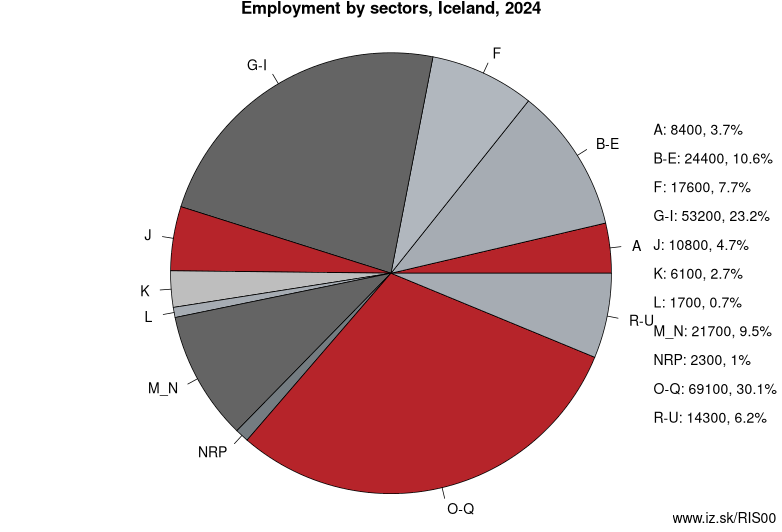
Iceland (Icelandic: Ísland; [ˈistlant] (listen)) is a Nordic island country in the North Atlantic, with a population of 360,390 and an area of 103,000 km2 (40,000 sq mi), making it the most sparsely populated country in Europe. The capital and largest city is Reykjavík, with Reykjavík and the surrounding areas in the southwest of the country being home to over two-thirds of the population. Iceland is volcanically and geologically active. The interior consists of a plateau characterised by sand and lava fields, mountains, and glaciers, and many glacial rivers flow to the sea through the lowlands. Iceland is warmed by the Gulf Stream and has a temperate climate, despite a high latitude almost entirely outside the Arctic Circle. Its high latitude and marine influence keep summers chilly, with most of the archipelago having a tundra climate.
According to the ancient manuscript Landnámabók, the settlement of Iceland began in 874 AD when the Norwegian chieftain Ingólfr Arnarson became the first permanent settler on the island. In the following centuries, Norwegians, and to a lesser extent other Scandinavians, emigrated to Iceland, bringing with them thralls (i.e., slaves or serfs) of Gaelic origin.
The island was governed as an independent commonwealth under the Althing, one of the world's oldest functioning legislative assemblies. Following a period of civil strife, Iceland acceded to Norwegian rule in the 13th century.
Subregions: Capital Region, Landsbyggð
Suggested citation: Michal Páleník: Europe and its regions in numbers - Iceland – IS00, IZ Bratislava, retrieved from: https://www.iz.sk/PIS00, ISBN: 978-80-970204-9-1, DOI:10.5281/zenodo.10200164
Similar articles
Navigation:
- Short news
- Local Administrative Units data of Visegrad countries open data
- Projects and activities
- European regions
- Random region: Austria, Western Austria, Tyrol, Innsbruck

 Share
Share Facebook
Facebook Twitter
Twitter News
News